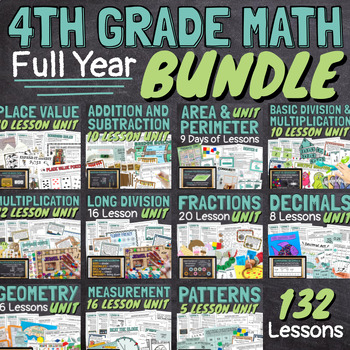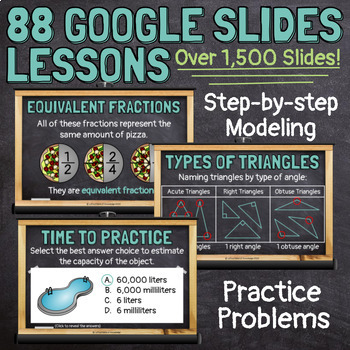4th Grade Math Lessons Full Year Bundle CCSS Curriculum Aligned
- Zip

What educators are saying
Products in this Bundle (120)
showing 1-5 of 120 products
Bonus
Description
This year long fourth grade math bundle includes 132 math lessons spanning 11 different units. All lessons are common core aligned and cover all CCSS standards required for 4th grade math!
Begin with each unit guide (these are free and linked below!). The lesson plans will walk you through each unit step by step with Google Slides lessons, worksheets, hands on activities, games, task cards, crafts, and unit assessments (tests). All resources you will need to implement these lessons for the full year are included in this bundle at 60% off!
Units include: (click the links to download the free unit guides with worksheets, activities, and assessments!)
- Place value
- Addition and subtraction
- Area and perimeter
- Basic multiplication and division
- Multiplication
- Long Division
- Fractions
- Decimals
- Geometry
- Measurement
- Patterns
If you teach 4th grade math, this is a must have! All of the lessons for the year are laid out for you with everything you need to teach them. You will not find a bigger time saver at a better price than this!
Please follow my store here for more great resources!
You can also find me on Facebook, Instagram, and lafountaineofknowledge.com where you'll discover ideas, inspiration, and plenty of freebies! Or join my email list to get a monthly newsletter with exclusive FREE resources you can't get anywhere else!
Want free money to spend on Teachers Pay Teachers? Rate this product to earn some TpT credit! Leaving feedback helps us both out and takes less than a minute! Your support makes it possible for me to continue making and sharing great resources! Thank you!





